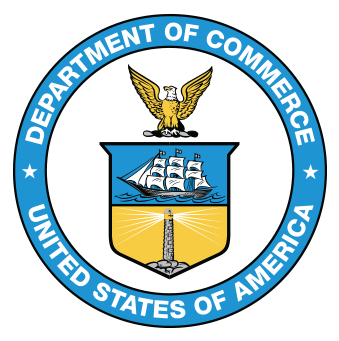Dataset Search
Sort By
Search results
113486 results found
St. Croix trap study
Data provided by National Oceanic and Atmospheric Administration
The data set contains detailed information about the catch from 600 trap stations around St. Croix. Data fields include species caught, size data, trap location (latitude and longitude), depth fished, date fished, hours fished, habitat fished, management zone, and survey design type. Two survey designs can be evaluated using this data: stratified random sampling and a spatially optimal design.
Tags:
Modified: 2025-04-21
Atlantic menhaden processing plant test tagging data
Data provided by National Oceanic and Atmospheric Administration
Atlantic menhaden are a schooling forage fish species, which are subject to a large commercial purse seine fishery. Atlantic menhaden are harvested for reduction into fish oil and fish meal products. Historically, the Atlantic menhaden fishery was one of the largest by volume in the United States. Thus, scientists and managers wanted a better understanding of Atlantic menhaden life history including movements on an annual basis. As a consequence, an adult tagging study was conducted from 1966-1971.
Tags:
Modified: 2025-04-21
Benthic Surveys in Vatia, American Samoa: comprehensive assessment of coral demography (adult and juvenile corals) from belt transect surveys in 2015 and 2020
Data provided by National Oceanic and Atmospheric Administration
Jurisdictional managers have expressed concerns that nutrients from the village of Vatia, Tutuila, American Samoa, are having an adverse effect on the adjacent coral reef ecosystem. Excess nutrient loads promote increases in algal growth that can have deleterious effects on corals, such as benthic algae outcompeting and overgrowing corals. Nitrogen and phosphorus can also directly impact corals by lowering fertilization success, and reducing both photosynthesis and calcification rates.
Tags:
Modified: 2025-04-21
Coral reef ecosystem marine protected area monitoring in Fagamalo, American Samoa: comprehensive assessment of coral demography (adult and juvenile corals) from belt transect surveys in 2015
Data provided by National Oceanic and Atmospheric Administration
In 2010 the village of Fagamalo, Tutuila, American Samoa, designated a no-take Marine Protected Area that sees the protection of 2.25 square kilometers of ocean. Because little is known regarding the status of living marine communities in the area, and at the request of the American Samoa Department of Marine and Wildlife Resources, NOAA scientists conducted surveys to assess the status of the benthic communities and establish a baseline against which to compare temporal change.
Tags:
Modified: 2025-04-21
Acoustic telemetry
Data provided by National Oceanic and Atmospheric Administration
To determine movements of green turtles in the nearshore foraging areas, we deployed acoustic tags and determined their movements through active and passive acoustic telemetry in San Diego Bay and the Long Beach area.
Tags:
Modified: 2025-04-21
Hormone Data
Data provided by National Oceanic and Atmospheric Administration
Hormones quantified from marine mammal and sea turtle tissue provide information about the status of each animal sampled, including its sex, reproductive status and nutritional condition.
Tags:
Modified: 2025-04-21
Gray Whale Survey Data
Data provided by National Oceanic and Atmospheric Administration
Gray whale calf production is estimated from data collected during the northbound migration as whales return to their feeding grounds in the Arctic. Counts of adult female whales with calves are made by observers and used to make the estimates.
Gray whale abundance is estimated from data collected during the southbound migration from feeding grounds in the Arctic to breeding grounds in the lagoons of Mexico. Observers record counts of whales as they pass the long-term study site at Granite Canyon, California.
Tags:
Modified: 2025-04-21
Non fisheries threats - Risk, status and trends of non-fisheries threats in the California Current to groundfish species
Data provided by National Oceanic and Atmospheric Administration
We are calculating the risk of focal groundfish species to non-fisheries related threats (e.g. shipping activity, inorganic pollution) and comparing the relative status and trends of each threat. This work is part of the larger Integrated Ecosystem Assessment for the California Current.
Non fisheries threats.
Tags:
Modified: 2025-04-21
OBSOLETE: Coral genetic - Taxonomic and genetic identification of deep-sea corals in bycatch and field surveys -linked to groundfish survey dataset
Data provided by National Oceanic and Atmospheric Administration
Data for this project will reside in the West Coast Groundfish Bottom Trawl Survey Data Base. This proposal relates to a continuation and augmentation of our efforts in creating a DNA sequence repository and voucher collection of coral and sponge species found off the U.S. West Coast, and initial steps toward population-level analysis in deep-sea octocorals and sponges using microsatellite loci. We propose to continue taking genetic samples from specimens collected during the 2012 West Coast Groundfish Bottom Trawl Survey, and continue DNA sequencing of those specimens.
Tags:
Modified: 2025-04-21
ISEMP - Integrated Status and Effectiveness Project
Data provided by National Oceanic and Atmospheric Administration
ISEMP has the overarching objective of developing management decision support tools from quantitative relationships of stream habitat quality and quantity's impact on anadromous salmonid population abundance and productivity in the Columbia River basin. ISEMP's data collection, management and analysis task and the resulting products can be organized into seven focal areas - three that are primarily data collection (ISEMP data streams) and four that are primarily data processing (ISEMP data management, monitoring guidance, and decision support tools).
Fish.
Tags:
Modified: 2025-04-21

